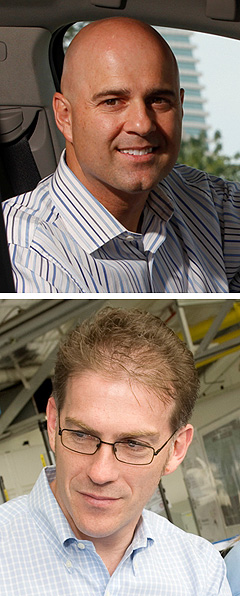Make / Model Search
News - HoldenHolden hits the production acceleratorFaster cars: Holden has increased the line speed of its Elizabeth plant by 15 per cent. Improved efficiencies help Holden, which says it can survive with Canberra aid31 Aug 2012 By IAN PORTER HOLDEN has completed a sweeping reorganistion of its production operations to achieve a 15 per cent improvement in productivity at its Elizabeth plant in South Australia, enabling output of 400 Commodores and Cruzes a day. But chairman and managing director Mike Devereux has warned that no amount of improved efficiency would enable the plant to survive without a level of co-investment by the federal government. “This plant would cease to exist if the co-investment program was stopped,” Mr Devereux said at a press conference today at the assembly plant in Adelaide’s northern suburbs. He stressed that he was not threatening the government or posturing for more assistance. “It’s illogical to think that this plant can exist with no assistance when every other country offers assistance to their car industries,” he said. “That’s just a fact.” Australia’s assistance was the lowest offered by any car-making country and, at the same time, the Australian market was the most open of any in the Group of 20 (G20). “In Australia, there are 65 brands competing for 1 million sales. In Japan, for instance there are half that number competing for 4.5 million sales.  From top: Holden chairman and managing director Mike Devereux Plant manager Richard Phillips. From top: Holden chairman and managing director Mike Devereux Plant manager Richard Phillips.“Australia has the most brutal war for sales anywhere in the world,” Mr Devereux said. He said car-making was a world game. “It’s a fact there is no level playing field,” he said. “It’s a fact that all major economies invest in their car industries.” Earlier this year, the government granted Holden $275 million in assistance o condition that Holden would invest an extra $1 billion to support the Elizabeth plant’s operation out to 2022. The company has said it will introduce two new world-standard platforms that will underpin two new Australian-made vehicles. Plant manager Richard Phillips said Holden had recently changed the cycle time on the assembly line from 100 seconds to 60 seconds. “That’s a massive change,” Mr Phillips said. It means there is now less idle time during the cycle, which means workers are adding value more of the time. “The loading on employees – the amount of time they are adding value – has improved 15 per cent.” Mr Devereux said Holden was also at world standard in its logistics operations, which see more than 500,000 parts enter the plant each day and 400 complete vehicles shipped out. He said the logistics challenge was immense, but that Holden’s people were recognised leaders in this area. “Many Elizabeth people are used in GM plants around the world – Thailand is a prime example – because it takes a decade to develop the skills to run a complex plant like this.” He said the change in cycle time to 60 seconds put it on the same level as a plant in China that only makes the Cruze small car. “That plant makes 220,000 cars a year, but doing a lot of the same thing is easy.”  Read more |
Click to shareHolden articlesResearch Holden Motor industry news |











Facebook Twitter Instagram